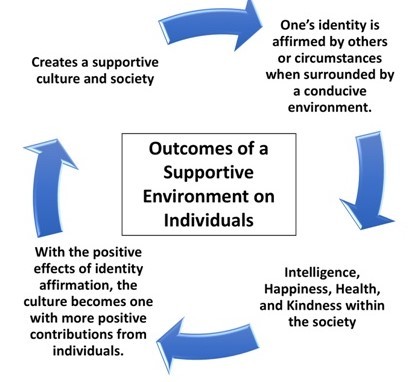It is a strongly held view that in most cases a high performing organization and a low performing one are so, because of a difference in their approach to ‘effective project management strategies’. Project management is an important aspect that can make or break a deal, as is evident from Capterra’s statistics.
In simple terms, project management is the way a person organizes and manages resources that are necessary to complete a project. A project has a start, an end, and a set of goals. But managing projects is not an easy task. It entails resolving the following set of pain points that are universal to all types and sizes of projects:
- Organization
- Accountability
- Consolidation
- Follow-Up
- Evaluation
- Visibility
- Feedback
Though these pain-points are a fair occurrence in all projects, they can be resolved using the right strategy and approach.

Hence, the following 5 project management strategies are a must have for every team leader. These strategies can help team leaders effectively navigate the pain points and increase the project completion percentage by leaps and bounds.
1. Initialize a plan of action
Just like it is important to have a route to reach a destination, similarly, it is important to have a road map for the completion of a project. And that is what this first strategy is all about.
Before undertaking any project it is important to vet it from all possible angles and perspectives. It involves the following steps:
-
- Ideation and Initiation: This involves brainstorming ideas for the project. It aims at collecting ideas that are feasible for the organization to achieve. In this phase, the project’s scope and objectives are defined; high-level risk assessment is performed to estimate possible potholes during the project and an estimate of total work to be performed is calculated.
- Definition and Planning: This phase involves around setting clear defined short and long-term goals for the project. Answer to questions like what deliverables, by when are defined to give structure to the roadmap. In this part, goals are set as a result of the management by objectives strategy. The goals formulated are specific, measurable, realistic, achievable and time bound.
Further, a project timeline is created that helps the team plan their entire scheme of execution with timely evaluation intervals. Such timelines help the team visualize the project’s growth for the near future and maintain it on track.
The above gives the team a clear defined overview of the project while at the same time creating an achievable and accountable plan of action. Also, the project plan should be a live document that keeps getting more detailed as the project enters its later stages. This dynamic document is the first step towards agile project management that includes planning, executing, monitoring and delivering.
The project is now not just a vague entity but a solid workable structure that keeps getting updated as the project advances.
2. Robust communication channels
A project is a whole made of multiple constituents, and if there is no communication among these constituents the project would not move as a whole. Hence, making communication a principal strategy for project management is essential.
After having drawn a consolidated map and divided your team to work on the varied parts that make up the project, it is important to establish open and direct communication channels.

Having an environment that encourages productive discussion and dialogue also helps team members to approach each other with new and improved ideas. This also keeps everyone on the team in the loop.
With such open channels of communication, reporting delays and progress is easier and new information and updates are directly available. This also reduces duplication of efforts and decreases redundancy.
This practice also reduces instances of misinformation and keeps the project on track.
Having a robust communication network ensures that correct information flow is maintained among all sections of the project, thus, reducing errors, delays, redundancy, and bottlenecks.
3. Choosing the right team

Every project has its own salient points and features that require specialized knowledge, which makes choosing the right person for the job an essential strategy. While planning the project, job roles and responsibilities are defined to outline the requirement for the work. Choosing someone who doesn’t fit the description or fulfills the requirement can lead to unnecessary delays and errors. While at the same time, reduce the project’s efficiency.
So it is paramount to assess and employ the appropriate team for each task to effectively manage the project. Selecting the right candidate for a task, will ensure the task is done in lesser time and with more finesse.
Clearly defining what is expected of each team member and aligning their task to their skill, talent and personality go a long way in creating an efficient working structure for the project. As the team leader, it is your responsibility to manage your human resource capital in the best way possible.
4. Employ project management software
Every project has innumerable tasks and glitches that need to be addressed from time to time. As the team leader, to stay on top of all things can sometimes be an overwhelming task. So instead of being caught in the crosshairs of tasks that take away from the project productivity, it is prudent to employ a project management software. Such a software has multiple benefits:
- It helps you keep an overview of the project and its accompanying tasks
- Keeps a record of all activity, which can be used later to assess glitches in processes
- Provides another communication platform for project members to stay updated on the current statistics of the project
- Helps track the project’s progress in a consolidated manner at timely intervals
Having a software that takes care of the small details, while at the same time keeps you informed is a great way to increase productivity.
Some examples of possible project management software you can use are:
- Trello — a project management tool that assists with team collaboration and gives a birds-eye-view of all the projects under progress in one place.
- Slack — a team management tool that connects team members, tasks, and other applications on a single platform making teamwork efficient and productive.
- Futuramo — a cloud collaboration platform for teams offering a suite of work management apps: Tasks, Visual Tickets, and Time Tracker.

5. Detailed evaluation at the close
Analyzing the work on a project right from the beginning until the end is a great learning tool. It helps identify new possible loopholes, processes that didn’t work and deadlines that were met. Making informed conclusions about the project performance is a great way to lay a solid foundation for all other projects.
Apart from testing deliverables at each critical goal and evaluating their performance, the final testing is far more telling. It gives you the exact shift from the values set in the first phase.
Conclusion
The above-mentioned strategies form the cornerstones for managing any kind of project. They are primary and basic in their approach but provide the ways necessary to ensure a smooth project. You can tweak them to manage your project depending on your work culture and company persona. Using the above will ensure your project gets completed within time and within budget, a win-win situation that can prove beneficial for all future projects.
About the author:
Shivankit Arora is a growth hacker and the founder of a startup marketing agency, MarketingMasala.com. You can connect with him on Twitter to know more about growth hacking and startup marketing.












